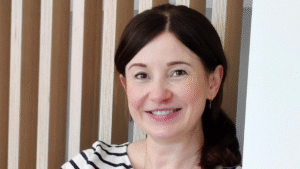
Futuri’s Chief Strategy Officer, Tracy Gilliam joins Radiodays Europe in Munich
As Futuri’s Chief Strategy Officer, Tracy Gilliam is deeply involved in product and go-to-market strategy, onboarding, and client success for all Futuri solutions, including Futuri AudioAI™ (formerly RadioGPT™), the world’s first 100% AI-driven local radio content system, and SpotOn, which uses AI to revolutionize the production of spec spots, commercials, and promos. Gilliam’s extensive broadcast leadership background gives her invaluable insight into how media companies can use technology to positively transform their organizations.
Gilliam has held senior management roles at CBS Radio (CBS O&O) Los Angeles, Clear Channel (iHeartMedia) Omaha, Premiere Radio Networks, KMOX (CBS O&O) St. Louis, and more. Tracy started her career as a broadcast journalist, holding a degree from the University of Missouri’s School of Journalism, and has a deep understanding of both the content and sales sides of the media business.




